
Fundamentals
Imagine a gentle spring, unfurling with an inherent grace, or a vibrant ribbon twisting into a playful, defined loop. This visual image captures the very spirit of what we term Type 3 Curls, a captivating category within the diverse world of textured hair. For those beginning their exploration of hair’s unique expressions, particularly within the rich heritage of Black and mixed hair, understanding this classification provides a foundational insight. It serves as an initial compass, guiding individuals toward a deeper appreciation of their natural texture.
The basic definition of Type 3 curls points to hair strands that form a distinct ‘S’ shape, ranging from loose, buoyant spirals to more tightly wound, springy ringlets. Unlike waves that might possess a softer bend, or coils that present in a more compact, zig-zag pattern, Type 3 curls possess a definitive, visible curl from the root. This means each individual strand follows a clear, curvilinear path, creating a lively and voluminous appearance. The diameter of these curls can vary, influencing how they respond to moisture, products, and environmental shifts.
Within the broader spectrum of hair typing systems, Type 3 curls occupy a cherished space, celebrated for their natural bounce and inherent definition. Recognizing this pattern is a first step in a meaningful hair journey, allowing for a more informed approach to daily care. It lays the groundwork for selecting nourishing ingredients and adopting practices that honor the hair’s natural inclinations. For many with Black and mixed hair, identifying their Type 3 curls can be a moment of clarity, offering a language to describe a texture often misunderstood or overlooked in mainstream beauty narratives.
Type 3 curls reveal themselves through distinct ‘S’-shaped patterns, ranging from expansive, buoyant spirals to compact, lively ringlets, signifying a foundational category within textured hair.

Initial Characteristics of Type 3 Curls
The hallmark of Type 3 curls lies in their recognizable form. Each curl creates a discernible spiral, reminiscent of a coiled spring, rather than a gentle undulation. This inherent structure provides natural volume and a captivating visual interest.
- S-Shape Pattern ❉ Hair strands curve into a clear ‘S’ shape, a defining characteristic of this curl category.
- Defined Spirals ❉ Curls are well-formed, often creating distinct ringlets or corkscrews without significant manipulation.
- Natural Volume ❉ The very nature of the curl pattern lifts the hair from the scalp, granting a beautiful fullness.
- Bounce and Spring ❉ These curls possess an elasticity, allowing them to recoil and maintain their shape with a delightful springiness.

Preliminary Care Considerations for Type 3 Curls
Even at this introductory stage, understanding a few basic principles can transform the experience of caring for Type 3 curls. Their unique structure, while beautiful, also presents specific needs that differ from straight or wavy hair. Moisture retention, for instance, stands as a central theme in nurturing these patterns.
Gentle handling becomes paramount when tending to Type 3 curls. The bends and twists in the hair shaft can make it more prone to tangling and breakage if not approached with patience. A conscious effort to detangle with care, often while the hair is damp and coated with a conditioning agent, preserves the integrity of each strand.
| Principle Moisture Infusion |
| Initial Explanation Type 3 curls often need consistent hydration to maintain their vitality and prevent dryness. |
| Principle Gentle Detangling |
| Initial Explanation Approaching tangles with a wide-tooth comb or fingers, particularly on wet hair, minimizes breakage. |
| Principle Sulfate-Free Cleansing |
| Initial Explanation Using shampoos without harsh sulfates helps preserve natural oils and prevents stripping the hair. |
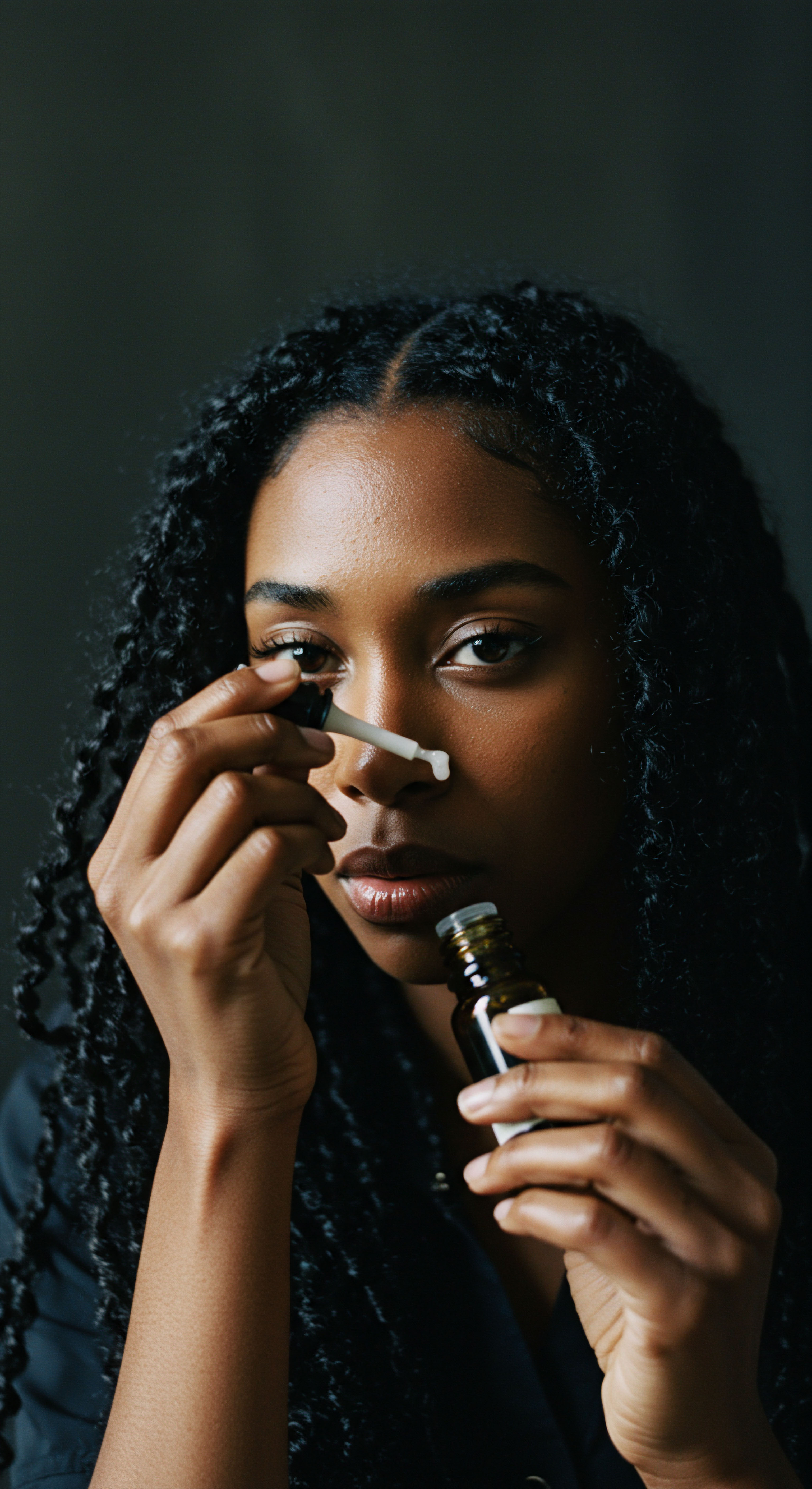
Intermediate
Moving beyond the foundational understanding, the intermediate exploration of Type 3 curls invites a more nuanced perspective, acknowledging the rich variations within this curl family. For those who have begun to recognize their hair’s ‘S’ pattern, this deeper dive provides practical insights into the daily and weekly rituals that genuinely celebrate and sustain these textures, especially within the context of Black and mixed hair experiences. The subtle differences between Type 3A, 3B, and 3C curls hold significant meaning for tailored care.
The significance of discerning these subcategories lies in optimizing product choices and styling methods. A loose, bouncy 3A curl might respond differently to a heavy cream than a tightly packed 3C corkscrew. This level of detail allows for a more personalized approach, moving beyond generic curly hair advice to practices that truly resonate with an individual’s specific curl pattern. It’s a journey of attentive listening to one’s hair, observing its unique responses to various applications.
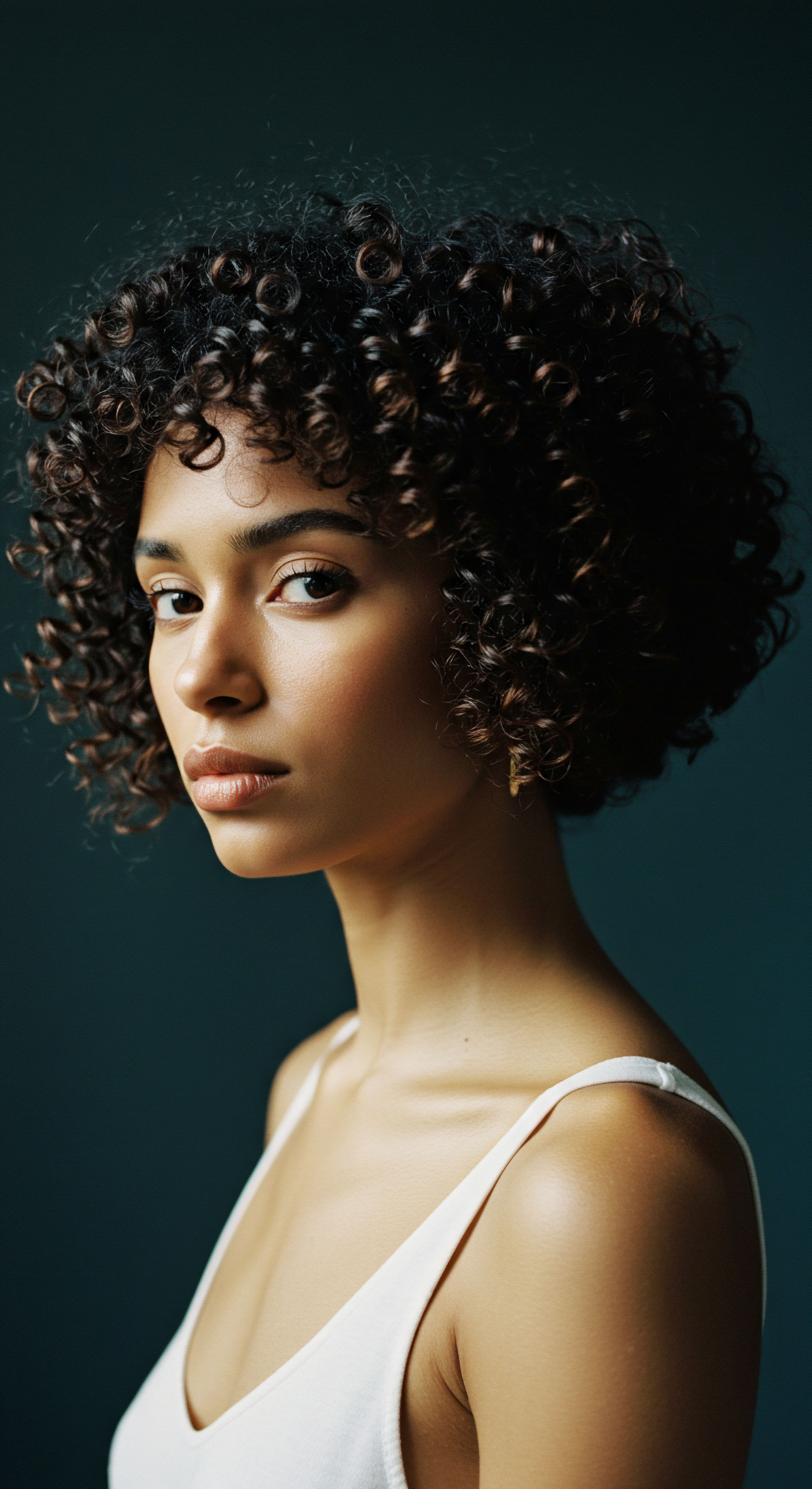
Discerning the Type 3 Subcategories
The Type 3 classification is further delineated into three distinct subcategories, each representing a progression in curl tightness and diameter. This categorization, while a helpful guide, recognizes that an individual’s hair may display a blend of these patterns across different sections of the head.
- Type 3A Curls ❉ These are characterized by loose, well-defined S-shaped spirals, often the circumference of a large piece of sidewalk chalk or a wine cork. They possess a good amount of bounce and are generally easier to straighten, though they still benefit immensely from hydration.
- Type 3B Curls ❉ Displaying tighter, more springy ringlets, Type 3B curls often resemble the size of a large marker. These curls tend to have more volume at the root and can be prone to frizz, requiring consistent moisture to maintain definition.
- Type 3C Curls ❉ Representing the tightest of the Type 3 family, these curls are dense, tightly packed corkscrews, with a circumference similar to a pencil or straw. They offer significant volume and are particularly susceptible to dryness and shrinkage, appearing much shorter when dry than wet.
Distinguishing between Type 3A, 3B, and 3C curls refines the understanding of individual hair needs, guiding the selection of precise care routines for optimal curl health and appearance.
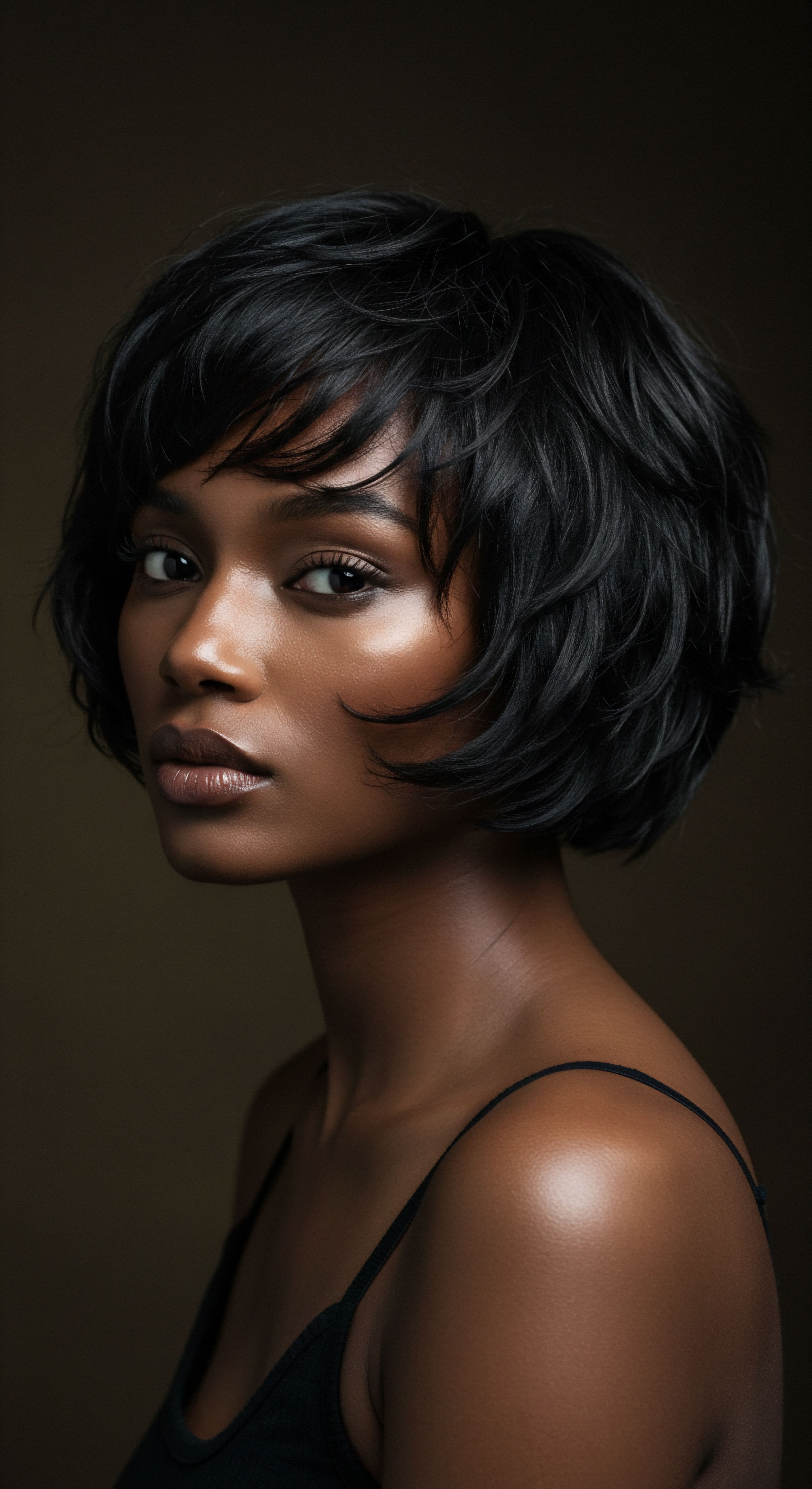
Practical Applications in Hair Care Rituals
For Type 3 curls, moisture is more than a preference; it is a fundamental requirement. The twists and turns of these curl patterns make it challenging for the scalp’s natural oils to travel down the hair shaft, leaving the ends particularly vulnerable to dryness. Regular conditioning, often including deep treatments, forms the cornerstone of a healthy regimen.
Styling techniques also play a pivotal role. Methods that encourage curl clump formation, such as raking in products or using a denman brush, can enhance definition and reduce frizz. Air drying or using a diffuser on a low heat setting can preserve the curl pattern without causing excessive disruption.

Moisture Retention Strategies
Achieving lasting hydration for Type 3 curls involves a multi-layered approach, sealing moisture into the hair cuticle. This process often involves a thoughtful sequence of products designed to work in concert.
- Leave-In Conditioners ❉ Applied after cleansing, these products provide a continuous layer of hydration, preparing the hair for subsequent styling.
- Creams and Milks ❉ These formulations offer a balance of moisture and light hold, helping to define curls without weighing them down.
- Oils and Butters ❉ Used as a final step in the moisture layering process, oils and butters help to seal the cuticle, preventing moisture from escaping.

Common Challenges and Solutions
Even with a dedicated routine, individuals with Type 3 curls may encounter specific hurdles. Frizz, shrinkage, and breakage are frequently cited concerns that require targeted strategies.
Frizz arises when the hair’s cuticle layer is raised, allowing external humidity to enter and disrupt the curl pattern. Countering this requires products that provide a strong, flexible hold and techniques that minimize disturbance once the curls are set.
Shrinkage, while a sign of healthy elasticity, can sometimes be frustrating, making hair appear much shorter than its actual length. While a natural characteristic, specific styling methods can help to gently elongate the curls.
Breakage is a concern due to the hair’s structural bends, which can create points of vulnerability. Careful detangling and minimizing manipulation are crucial protective measures.
| Concern Frizz |
| Solution Approach Utilize curl-defining gels or mousses for hold; dry gently with a diffuser or air dry. |
| Concern Shrinkage |
| Solution Approach Employ tension styling methods; gently stretch curls while drying; consider wash-and-go styles that embrace natural length. |
| Concern Dryness |
| Solution Approach Implement regular deep conditioning; layer moisturizing products; protect hair at night with satin or silk. |
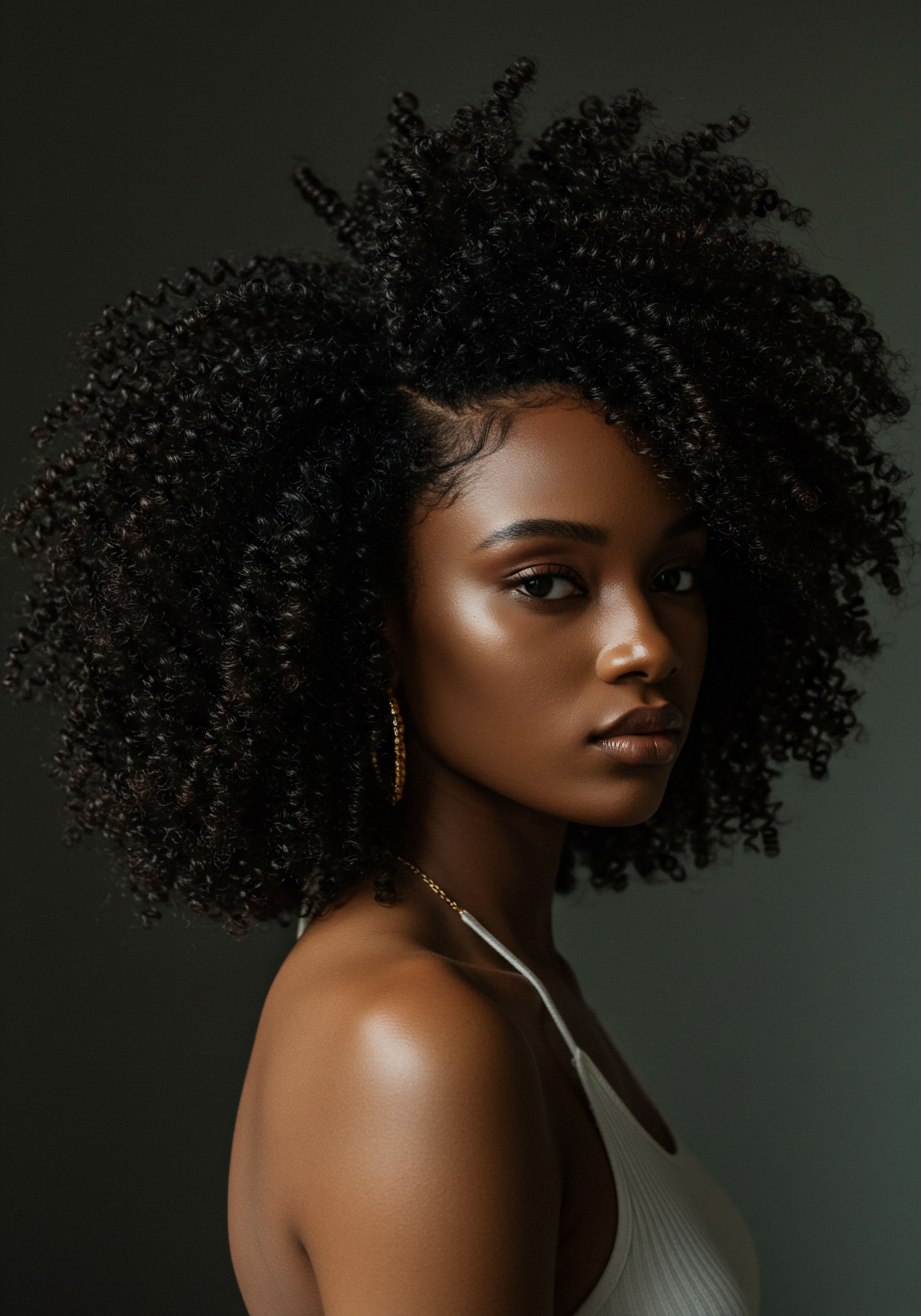
Advanced
The true meaning of Type 3 curls extends far beyond a simple visual classification; it represents a profound intersection of biology, cultural identity, and societal experience, particularly for individuals of Black and mixed heritage. At this advanced tier of comprehension, we move beyond surface-level descriptions to a comprehensive elucidation of its inherent complexities, acknowledging the intricate dance of genetic predispositions, cellular architecture, and the broader socio-historical contexts that shape its perception and care.
A deep understanding of Type 3 curls necessitates an exploration of the microscopic forces that dictate their formation. The helical structure of these curls originates from the unique morphology of the hair follicle itself. Unlike the perfectly round follicles that produce straight hair, those yielding Type 3 curls are distinctly oval or asymmetrical, with a subtle curvature at the base.
This asymmetrical growth path compels the hair strand to bend and spiral as it emerges from the scalp. The degree of this ovality directly correlates with the tightness of the curl pattern; a more flattened oval follicle will generate a tighter, more defined curl.
Furthermore, the internal composition of the hair strand plays a critical role. Keratin, the primary protein component of hair, is not uniformly distributed throughout the shaft in curly hair. Instead, it tends to accumulate unevenly, creating differential tension along the strand.
This uneven distribution, coupled with the arrangement of disulfide bonds within the hair’s cortex, reinforces the curl’s permanent shape. Hydrogen bonds, while temporary and susceptible to water and humidity, also contribute to the hair’s responsiveness to environmental conditions, explaining the familiar phenomenon of frizz in humid climates.
Type 3 curls, a testament to genetic artistry and cellular design, represent a complex interplay of follicular shape, keratin distribution, and chemical bonds, manifesting as distinct ‘S’-shaped spirals.
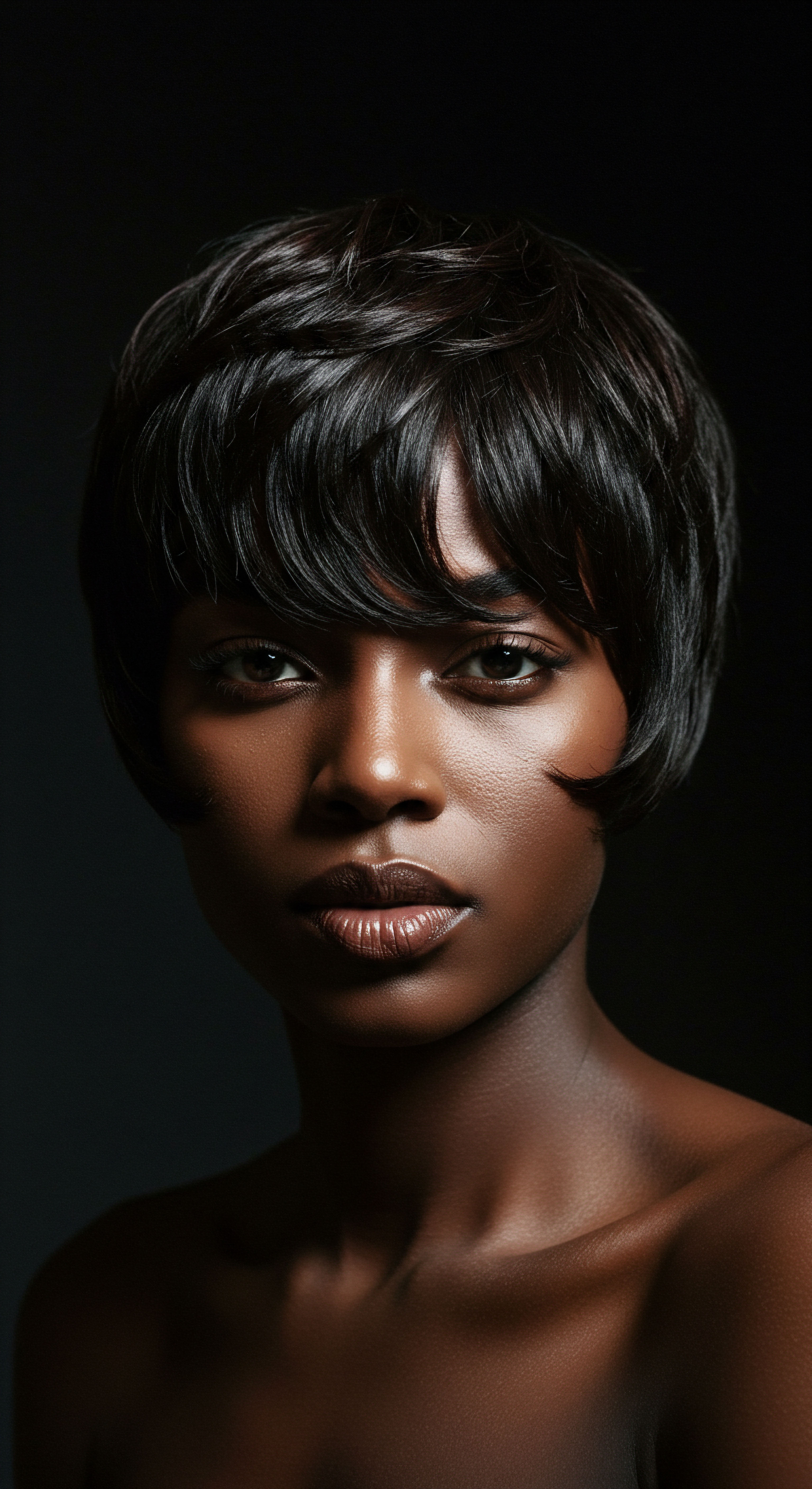
Biological and Biophysical Delineation
The biophysical characteristics of Type 3 curls present unique challenges and considerations for product formulation and care. The numerous twists and turns along the hair shaft create points where the cuticle, the outermost protective layer of the hair, can be naturally lifted or prone to lifting. This elevated cuticle structure, common in textured hair, impacts porosity—the hair’s ability to absorb and retain moisture. Type 3 curls, especially the tighter 3B and 3C patterns, often exhibit higher porosity, meaning they readily absorb water but also lose it just as quickly, leading to increased susceptibility to dryness and frizz.
Understanding the implications of porosity is paramount for cosmetic chemists and hair care professionals. Products designed for Type 3 curls must therefore focus on delivering sustained hydration and sealing the cuticle effectively. This often involves incorporating humectants to draw moisture from the air, emollients to soften and smooth the hair, and occlusives to create a protective barrier. The structural integrity of Type 3 hair is also a consideration; the natural bends in the fiber can make it more fragile and susceptible to mechanical damage from styling or manipulation.

Hair Follicle Morphology and Curl Formation
The journey of a Type 3 curl begins deep within the scalp, governed by the shape of its follicle. This intricate biological blueprint determines the very trajectory of hair growth.
- Oval Follicle Shape ❉ The fundamental cause of Type 3 curl formation is the oval or elliptical cross-section of the hair follicle. A more pronounced ovality correlates with a tighter curl.
- Angled Growth ❉ Hair strands emerge from the scalp at an angle, rather than straight up, initiating the spiral growth pattern.
- Asymmetrical Keratinization ❉ The uneven distribution of keratin proteins within the hair shaft, particularly on the inner curve of the growing strand, contributes to the hair’s tendency to coil.

Cultural and Societal Implications of Type 3 Curls
Beyond its biological definition, the meaning of Type 3 curls, particularly within Black and mixed-race communities, is deeply interwoven with history, identity, and social dynamics. Hair has historically served as a potent symbol of status, heritage, and resistance across African cultures. Traditional African hairstyles, some of which closely resemble Type 3 and 4 curl patterns, communicated tribal affiliation, marital status, age, and even social standing.
However, the transatlantic slave trade and subsequent periods of systemic oppression imposed Eurocentric beauty standards, leading to the marginalization and devaluation of natural Black hair textures. For generations, chemical relaxers and heat styling were often seen as a means to conform to societal norms, sometimes at the expense of hair health and personal authenticity. The “natural hair movement,” gaining significant momentum in the 1960s and experiencing a powerful resurgence in the 2000s, represents a profound reclamation of self-acceptance and cultural pride. This movement has encouraged individuals to embrace their Type 3 curls and other textured patterns as expressions of inherent beauty and heritage.
Type 3 curls carry a profound cultural significance, embodying a legacy of heritage, resilience, and identity within Black and mixed-race communities, challenging historically imposed beauty standards.

The Weight of Perception ❉ A Case Study in Hair Discrimination
Despite strides in acceptance, the journey for those with Type 3 curls, especially Black women, continues to face societal hurdles. The perception of professionalism often remains skewed, highlighting an ongoing disparity. A compelling study published in Social Psychological and Personality Science in 2020 by Christy Zhou Koval and Ashleigh Shelby Rosette revealed a significant “natural hair bias” in job recruitment. Their research indicated that Black Women with Natural Hairstyles, Including Various Type 3 Curl Patterns, Were Perceived as Less Professional and Less Competent, and Consequently, Were Less Likely to Be Recommended for Job Interviews Compared to Black Women with Straightened Hair or White Women with Straight or Curly Hair. This finding underscores a systemic issue where the very biological expression of Type 3 curls can translate into tangible economic and social disadvantages.
This research illuminates the enduring psychological toll, as individuals may feel compelled to alter their natural hair to navigate professional spaces, potentially leading to a disconnect from their authentic selves. The ongoing efforts behind initiatives like the CROWN Act, which seeks to prohibit race-based hair discrimination, directly address these systemic biases, advocating for a world where Type 3 curls are celebrated without professional penalty. The implications of this data are far-reaching, extending beyond aesthetics to impact self-worth, career trajectories, and overall well-being within the textured hair community.

Advanced Care and Product Science
For Type 3 curls, the science of care revolves around a delicate balance of moisture, protein, and environmental protection. Given the tendency for dryness and the unique cuticle structure, product selection is critical. Cosmetic chemists continually refine formulations to address these specific needs, moving beyond simple hydration to sophisticated delivery systems.
Proteins, such as hydrolyzed wheat protein or keratin, can selectively strengthen the hair shaft and temporarily reinforce the cuticle, particularly beneficial for higher porosity Type 3 curls that may experience more wear and tear. However, an excess of protein can lead to stiffness, necessitating a careful equilibrium with moisturizing ingredients.
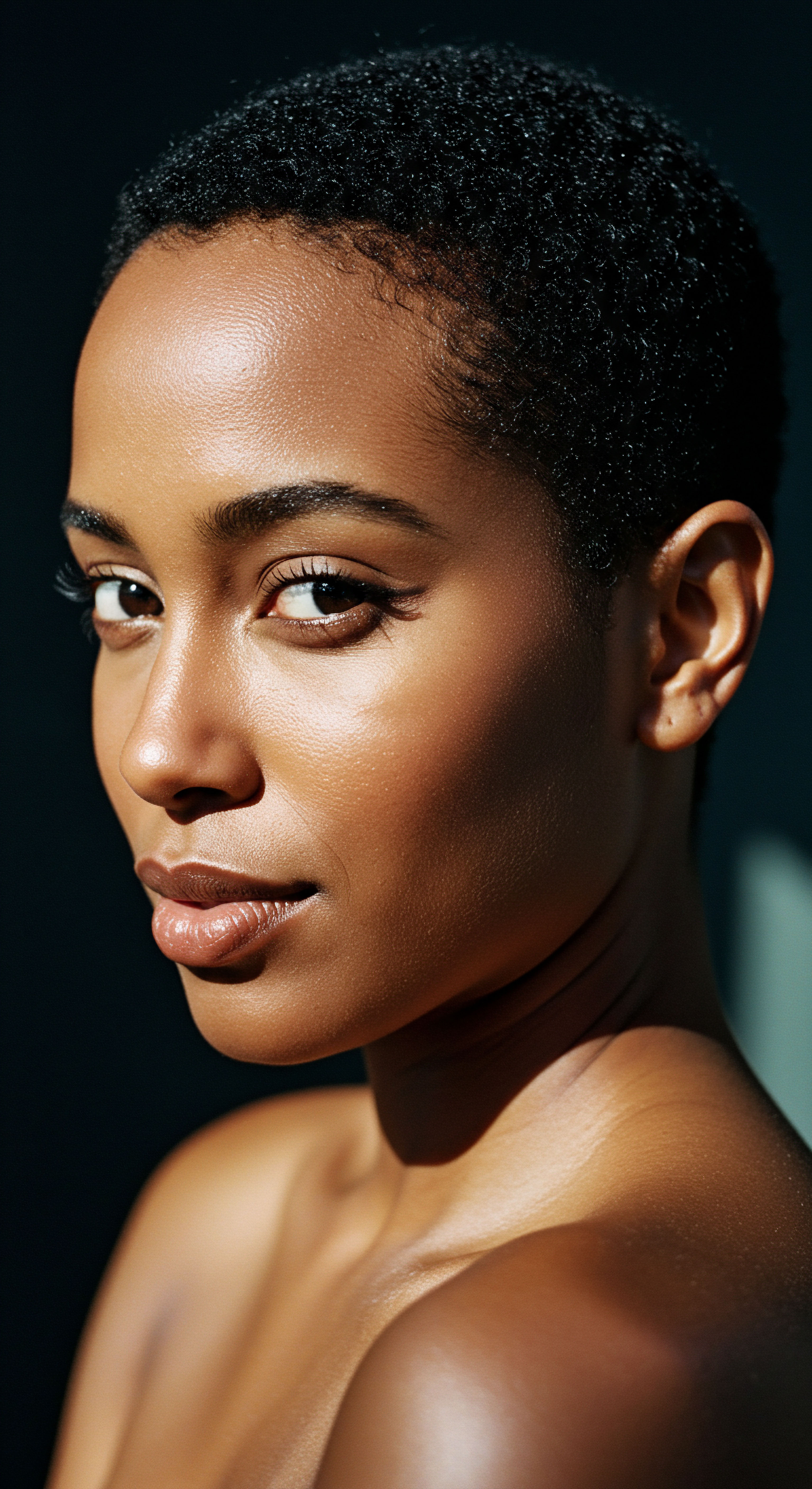
Formulation Considerations for Type 3 Curls
Developing products for Type 3 curls requires a deep understanding of their unique needs, balancing moisture, definition, and structural integrity.
- Humectant Balance ❉ Ingredients like glycerin or hyaluronic acid draw moisture from the air, providing hydration, but their concentration must be optimized to prevent stickiness or excessive frizz in varying humidity levels.
- Emollient Richness ❉ Oils and butters (e.g. shea butter, jojoba oil) offer lubrication and softness, smoothing the cuticle and providing a protective seal without creating excessive weight.
- Polymer Selection ❉ Curl-defining polymers help to set and hold the curl pattern, reducing frizz and maintaining shape throughout the day. These should offer flexible hold, allowing for natural movement.
- PH Optimization ❉ Products formulated with a slightly acidic pH (typically between 4.5 and 5.5) help to keep the cuticle layer sealed, enhancing shine and reducing frizz.

Long-Term Health and Evolution of Care
The long-term success in caring for Type 3 curls hinges on adaptability and a commitment to ongoing learning. As hair ages or is exposed to various treatments, its needs may shift. Regular deep conditioning treatments, protein masks as needed, and consistent protective styling practices contribute to sustained hair health. Minimizing heat exposure and harsh chemical treatments preserves the natural curl pattern and structural integrity.
The evolving landscape of hair science continues to yield new insights into the biophysical properties of textured hair, leading to more targeted and effective solutions. This continuous scientific inquiry, coupled with a growing cultural appreciation for Type 3 curls, promises a future where their care is not only optimized but also deeply celebrated as an integral aspect of identity and well-being.
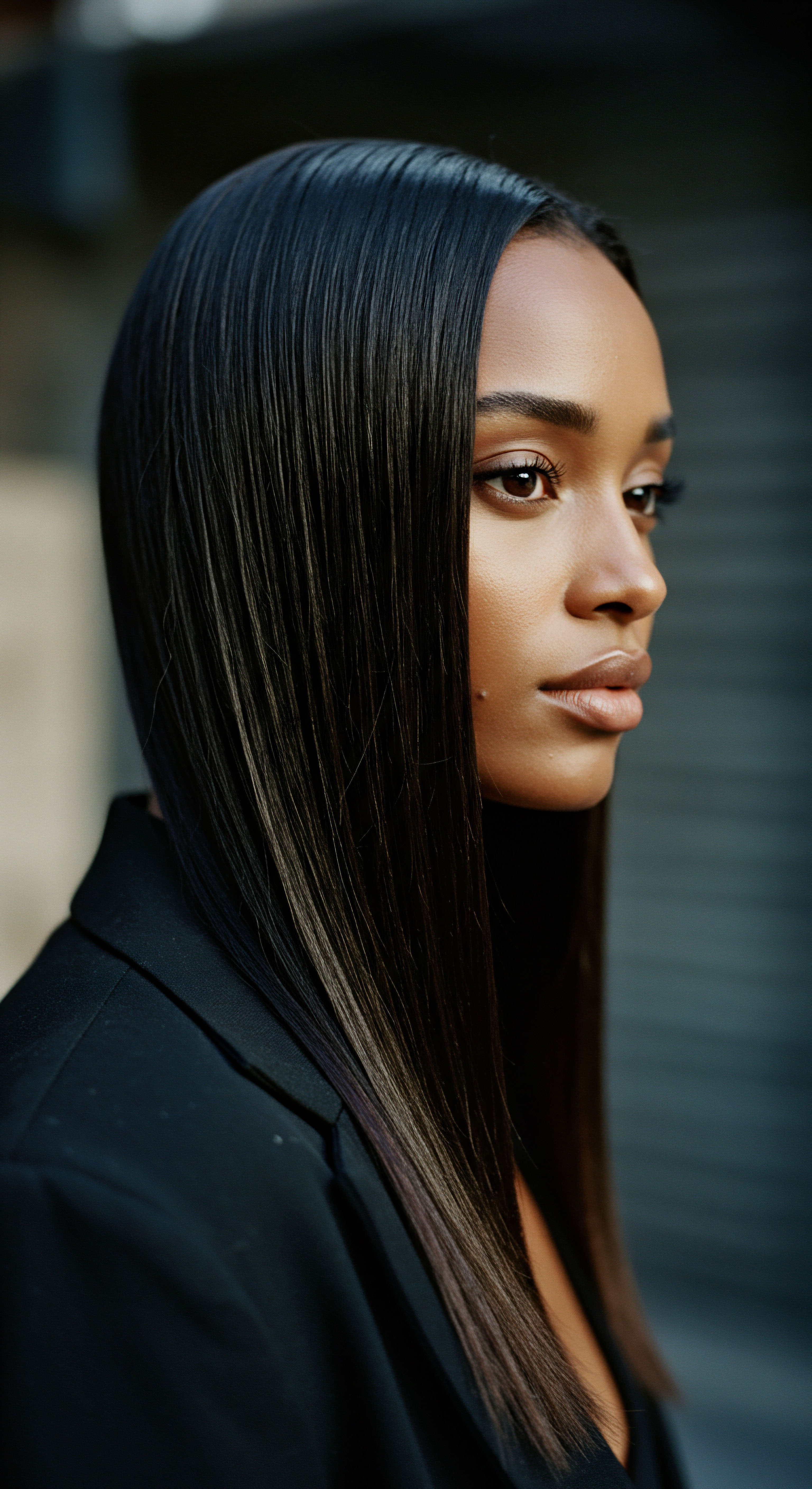
Reflection
As we draw our exploration of Type 3 curls to a close, it becomes clear that this particular hair pattern is far more than a mere aesthetic attribute; it is a vibrant testament to natural diversity, a whisper of ancestral heritage, and a powerful statement of self-acceptance. Each spiral, each buoyant loop, carries within it a story—a narrative of resilience, a journey of discovery, and a celebration of unique beauty. The care of these curls, therefore, transforms into a tender ritual, an act of honoring not just the strands themselves, but the individual who wears them with grace and conviction.
The journey with Type 3 curls, whether for a seasoned enthusiast or a curious newcomer, is one of continuous learning and gentle adaptation. It invites us to pause, to truly observe, and to respond to the hair’s subtle cues, fostering a relationship built on understanding and respect. In this dance between science and spirit, between the tangible needs of the hair and the intangible richness of its cultural significance, lies the profound satisfaction of nurturing Type 3 curls. It is a path that celebrates authenticity, encourages self-love, and reminds us of the exquisite artistry inherent in every natural texture.
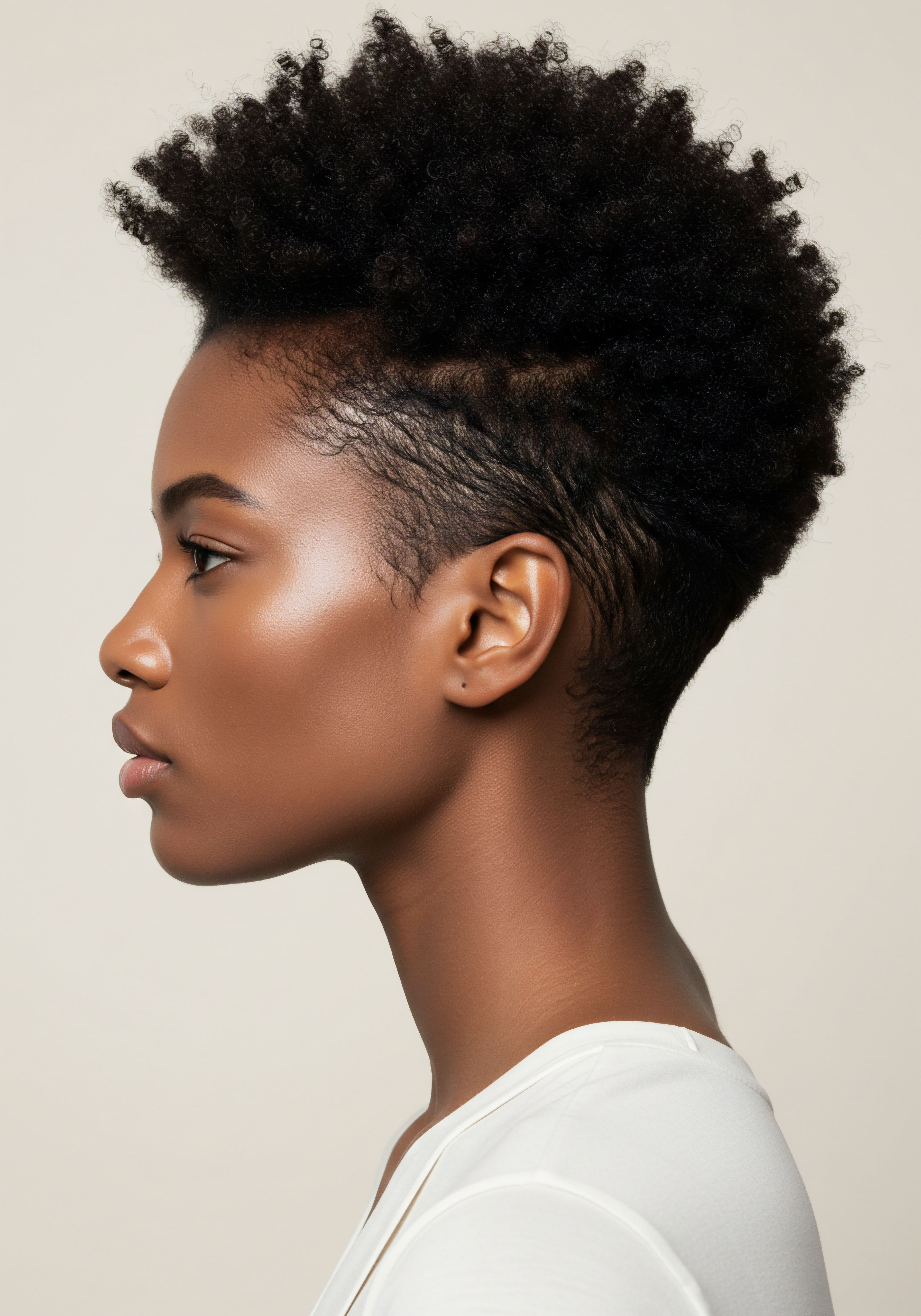
References
- Byrd, Ayana D. and Tharps, Lori L. Hair Story ❉ Untangling the Roots of Black Hair in America. St. Martin’s Press, 2001.
- Chimbiri, Kandace. The Story of Afro Hair. Scholastic, 2021.
- Koval, Christy Zhou, and Rosette, Ashleigh Shelby. “The Natural Hair Bias in Job Recruitment.” Social Psychological and Personality Science, vol. 11, no. 8, 2020, pp. 1099-1107.
- Lisse, Adenique. “Hair Satisfaction and Depressive Symptoms in Black, White, and Latina Adolescent Girls ❉ The Moderating Role of Hair Discrimination.” Body Image, vol. 44, 2023, pp. 263-272.
- McMullen, Roger L. Gillece, Timothy, and Schiess, Tyler. “Physicochemical Properties of Textured Hair.” Journal of Cosmetic Science, vol. 72, no. 6, 2021, pp. 711-731.
- Richena, Marina, and Harland, Duane P. “What Causes Curly Hair?” Journal of Cosmetic Science, vol. 72, no. 6, 2021, pp. 643-654.
- Thibaut, S. et al. “Human hair keratin network and curvature.” International Journal of Dermatology, vol. 46, no. 7, 2007, pp. 7-10.